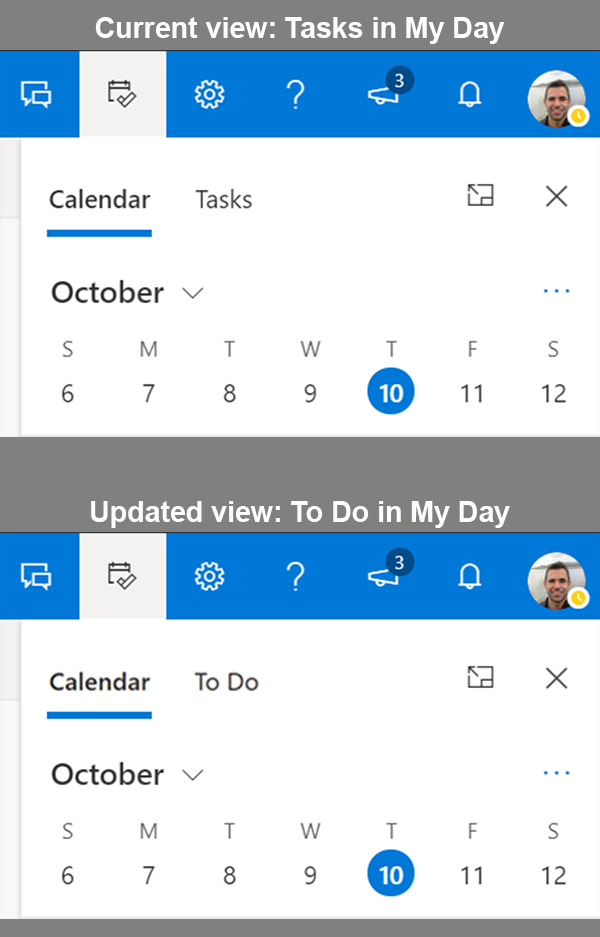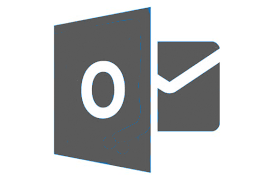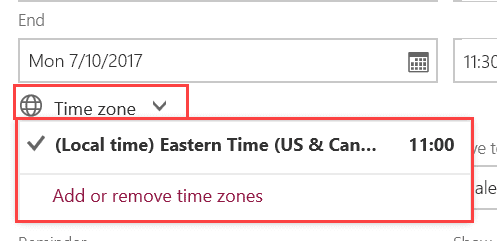Calendar will automatically show any accounts that you're signed in to with your Apple ID. You can also add calendars or calendar subscriptions from your email account, social media and more, and they'll stay up to date across your devices. iCloud can help you manage your events and appointments so you're where you need to be, when you need to be there.
The Time Zone Data Update Tool for Microsoft Office Outlook does work for individual users, but has some serious downsides. Kuch to hai youtube. Including each user needs to run it (approx 400 users), and also it only seems to work on the default account in Outlook 2010, a lot of our users have role accounts as well that we would need to run the tool on. However, the Time Zone Data Update Tool contains enhancements that improve what is available in Outlook 2007 and should be run instead of the out-of-the-box Outlook 2007 experience.
If you don't want the time zone to update automatically, you can change the Calendar settings on your device. On your iPhone, iPad and iPod touch: Go to Settings Calendar. Tap Time Zone Override. Slide to turn on Time Zone Override. Tap Time Zone and search for the time zone you want to use. On your Mac: Open the Calendar app. Under Time zone, select an option from the drop-down menu. If you'd like Slack to automatically update your time zone when you're traveling, check the box next to Set time zone automatically. Note: When you update your time zone in Slack, your reminders and notification schedule will stay in your local time.

Get started
- Update your iPhone, iPad, and iPod touch to the latest version of iOS, and your Mac to the latest version of macOS.
- Make sure you're signed in to iCloud with the same Apple ID on all of your devices.

Set your default calendar
When you create a new event, iCloud adds it to your default calendar. To make setting appointments easier, the calendar you use the most – probably for work or home – should be your default calendar. You can change your default calendar from your device or on iCloud.com.

On your iPhone, iPad or iPod touch:
- Go to Settings > Calendar.
- Tap Default Calendar.
- Choose the calendar that you want to use as your default.
On your Mac:
- Open Calendar (or iCal).
- Click Calendar in the menu bar and choose Preferences.
- In the General tab, choose the calendar that you want to use from the Default Calendar menu.
Multiple Time Zones Outlook
On iCloud.com:
- Go to Calendar > > Preferences.
- Choose the calendar that you want to use from the Defaults menu.
- Click Save.
Manage your events
Whether you're managing your schedule from your Mac or setting appointments on the go, using your Calendar is simple. And any changes you make immediately appear on all of your Apple devices.
Add an event
- Open Calendar.
- Select the event date.
- Tap and enter the details of your appointment.
Change an event
- Open Calendar.
- Select the event you want to change.
- Tap Edit.
Delete an event

- Open Calendar.
- Select the event you want to delete.
- Tap Delete Event.
You can only delete events that you created. If you have an event on your Calendar that someone else invited you to, you can tap Decline and remove the event. If you want to remove an event on a subscribed calendar, you might need to go to the subscription source – for example, decline an event on Facebook – for it to delete from your iCloud Calendar.
Share calendars with your family
iCloud makes it easy to keep track of everyone's active schedule. When you set up Family Sharing, it creates a family calendar where everyone can see and add appointments, and they can also get an alert when something changes. After your family members join your group, the family calendar instantly shows up on everyone's devices.
If you don't want to share the family calendar, you can unsubscribe from it directly on your device or on iCloud.com and remain in the Family Sharing group.
Change your time zone
Your device automatically updates your Calendar and appointments to reflect the time zone you're currently in. So if you travel from San Francisco to New York, your 1.00 p.m. alert will now go off at 4.00 p.m. If you don't want the time zone to update automatically, you can change the Calendar settings on your device.
On your iPhone, iPad and iPod touch:
- Go to Settings > Calendar.
- Tap Time Zone Override.
- Slide to turn on Time Zone Override.
- Tap Time Zone and search for the time zone you want to use.
On your Mac:
- Open the Calendar app.
- Click Calendar in the menu bar and choose Preferences.
- Go to the Advanced tab.
- Check Turn on time zone support.

Get started
- Update your iPhone, iPad, and iPod touch to the latest version of iOS, and your Mac to the latest version of macOS.
- Make sure you're signed in to iCloud with the same Apple ID on all of your devices.
Set your default calendar
When you create a new event, iCloud adds it to your default calendar. To make setting appointments easier, the calendar you use the most – probably for work or home – should be your default calendar. You can change your default calendar from your device or on iCloud.com.
On your iPhone, iPad or iPod touch:
- Go to Settings > Calendar.
- Tap Default Calendar.
- Choose the calendar that you want to use as your default.
On your Mac:
- Open Calendar (or iCal).
- Click Calendar in the menu bar and choose Preferences.
- In the General tab, choose the calendar that you want to use from the Default Calendar menu.
Multiple Time Zones Outlook
On iCloud.com:
- Go to Calendar > > Preferences.
- Choose the calendar that you want to use from the Defaults menu.
- Click Save.
Manage your events
Whether you're managing your schedule from your Mac or setting appointments on the go, using your Calendar is simple. And any changes you make immediately appear on all of your Apple devices.
Add an event
- Open Calendar.
- Select the event date.
- Tap and enter the details of your appointment.
Change an event
- Open Calendar.
- Select the event you want to change.
- Tap Edit.
Delete an event
- Open Calendar.
- Select the event you want to delete.
- Tap Delete Event.
You can only delete events that you created. If you have an event on your Calendar that someone else invited you to, you can tap Decline and remove the event. If you want to remove an event on a subscribed calendar, you might need to go to the subscription source – for example, decline an event on Facebook – for it to delete from your iCloud Calendar.
Share calendars with your family
iCloud makes it easy to keep track of everyone's active schedule. When you set up Family Sharing, it creates a family calendar where everyone can see and add appointments, and they can also get an alert when something changes. After your family members join your group, the family calendar instantly shows up on everyone's devices.
If you don't want to share the family calendar, you can unsubscribe from it directly on your device or on iCloud.com and remain in the Family Sharing group.
Change your time zone
Your device automatically updates your Calendar and appointments to reflect the time zone you're currently in. So if you travel from San Francisco to New York, your 1.00 p.m. alert will now go off at 4.00 p.m. If you don't want the time zone to update automatically, you can change the Calendar settings on your device.
On your iPhone, iPad and iPod touch:
- Go to Settings > Calendar.
- Tap Time Zone Override.
- Slide to turn on Time Zone Override.
- Tap Time Zone and search for the time zone you want to use.
On your Mac:
- Open the Calendar app.
- Click Calendar in the menu bar and choose Preferences.
- Go to the Advanced tab.
- Check Turn on time zone support.
Learn more
Microsoft Outlook For Mac Updates
- Get help using iCloud Calendar.
- Follow these steps if you see duplicate calendars or events on your iCloud Calendar.
- You can also get help using Outlook with iCloud for Windows.
